“Another exhibition at another foreboding historical moment” says the invitation card to Walid Raad’s exhibitions at Sfeir-Semler galleries in Karantina and Downtown. Raad’s artworks have time and again engaged such moments and what they make evident, possible, probable, thinkable, sayable, and imaginable. He has done so via three long-term ongoing projects: The Atlas Group (1989-2004), Scratching on things I could disavow, and Sweet Talk: Commissions (Beirut).
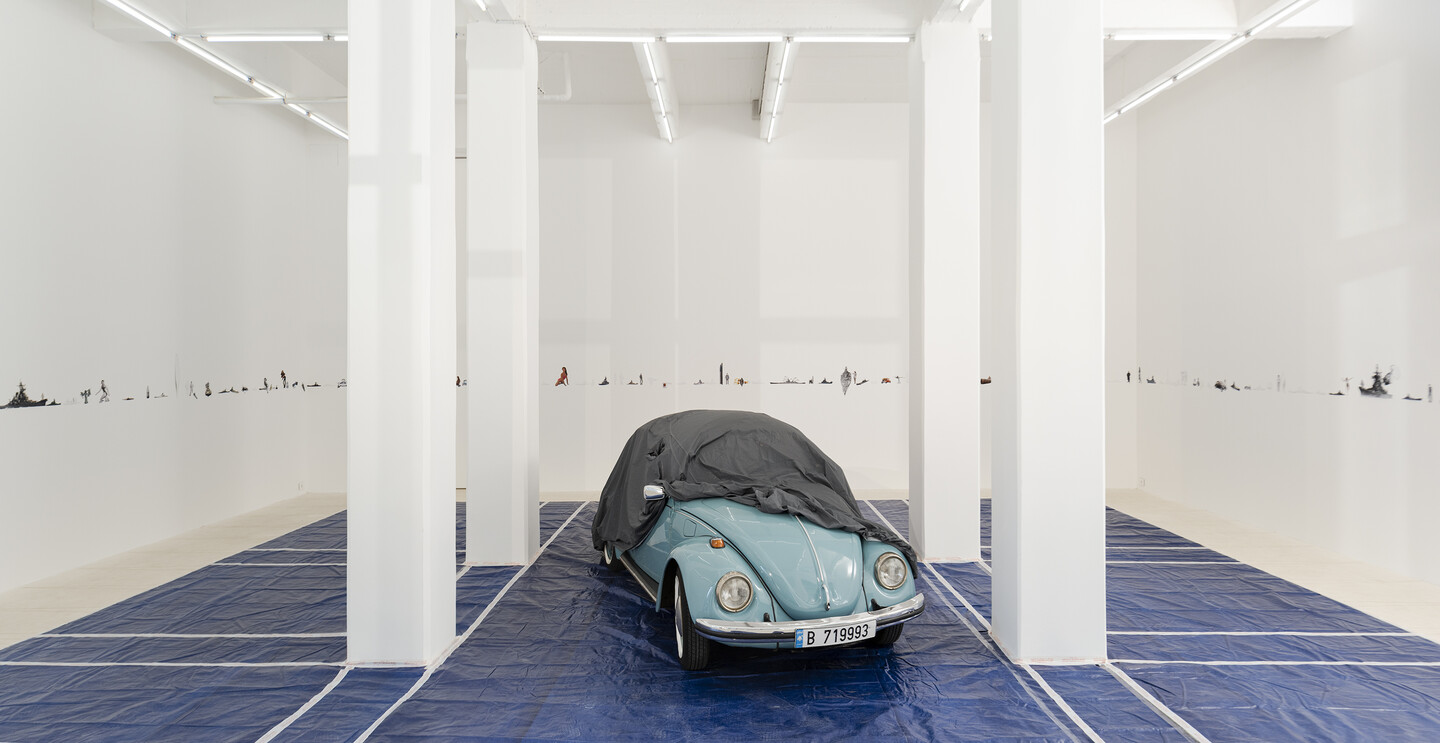
VW Beetle, car cover, blue tarps, collage images, various dimensions, unique
In this exhibition in Beirut, Raad once again displays documents that he creates but that he relates to as found and/or received, and attributes, in many instances, to imaginary collaborators. The documents are presented as aesthetic objects along with their accompanying stories. Raad’s objects are photographs (or most often, photographs of other documents, be they notebooks, paintings, drawings, maps), videos, sculptures or mixed-media installations. His stories are short. They read like reports, transcriptions of stories recorded by Raad, and often attributed to imaginary characters such as Suha Traboulsi, Farid Sarroukh, and Manal B. Tarabay. Raad relates to these characters “less as fictional creations and more as artistic collaborators who dwell in another realm, occasionally sending me signals I am able to decipher.”
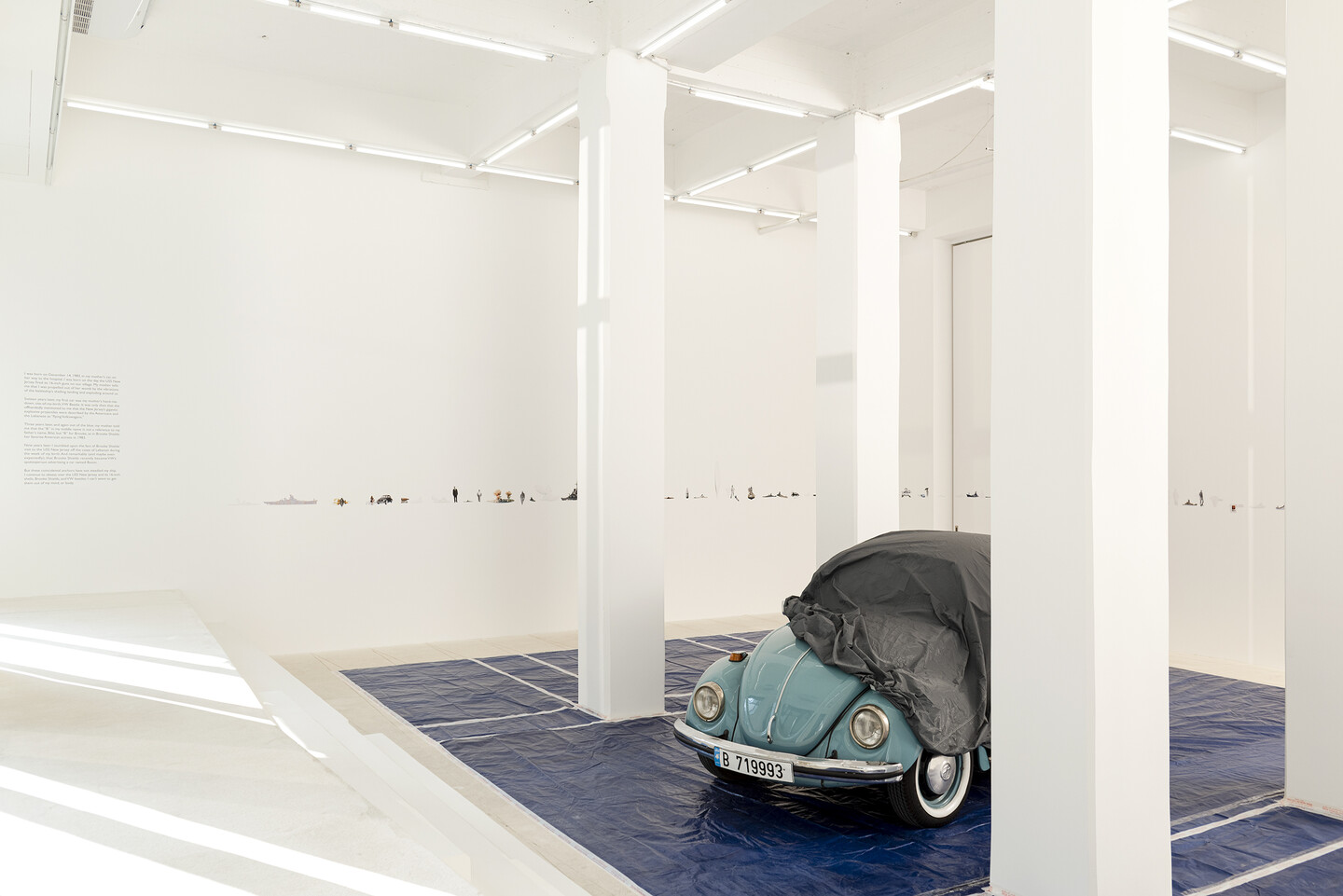
The dual exhibitions at Sfeir-Semler in Beirut showcase new and recent works. In the Downtown space, the artist presents a new multimedia installation that engages the 1983-84 bombardment of Lebanon by the most decorated American battleship, the USS New Jersey. The battleship’s arrival and actions in Lebanese waters were a direct consequence of Israel’s invasion of Lebanon in 1982, the evacuation of PLO fighters from Beirut, the election and assassination of Bashir Gemayel, the Sabra-Chatilla massacres, and the bombing of the US embassy and Marines headquarters in Beirut in April and October 1983. In an installation attributed to his imaginary collaborator Manal B. Tarabay, Raad leans into these loaded political, military, and historical events precisely because he sensed that their effects exceeded their political, military and historical dimensions. The artist presents dozens of photographic cutouts surrounding a covered car, all attributed to a character who seems unable to dislodge such images not only from her mind but also from her body.
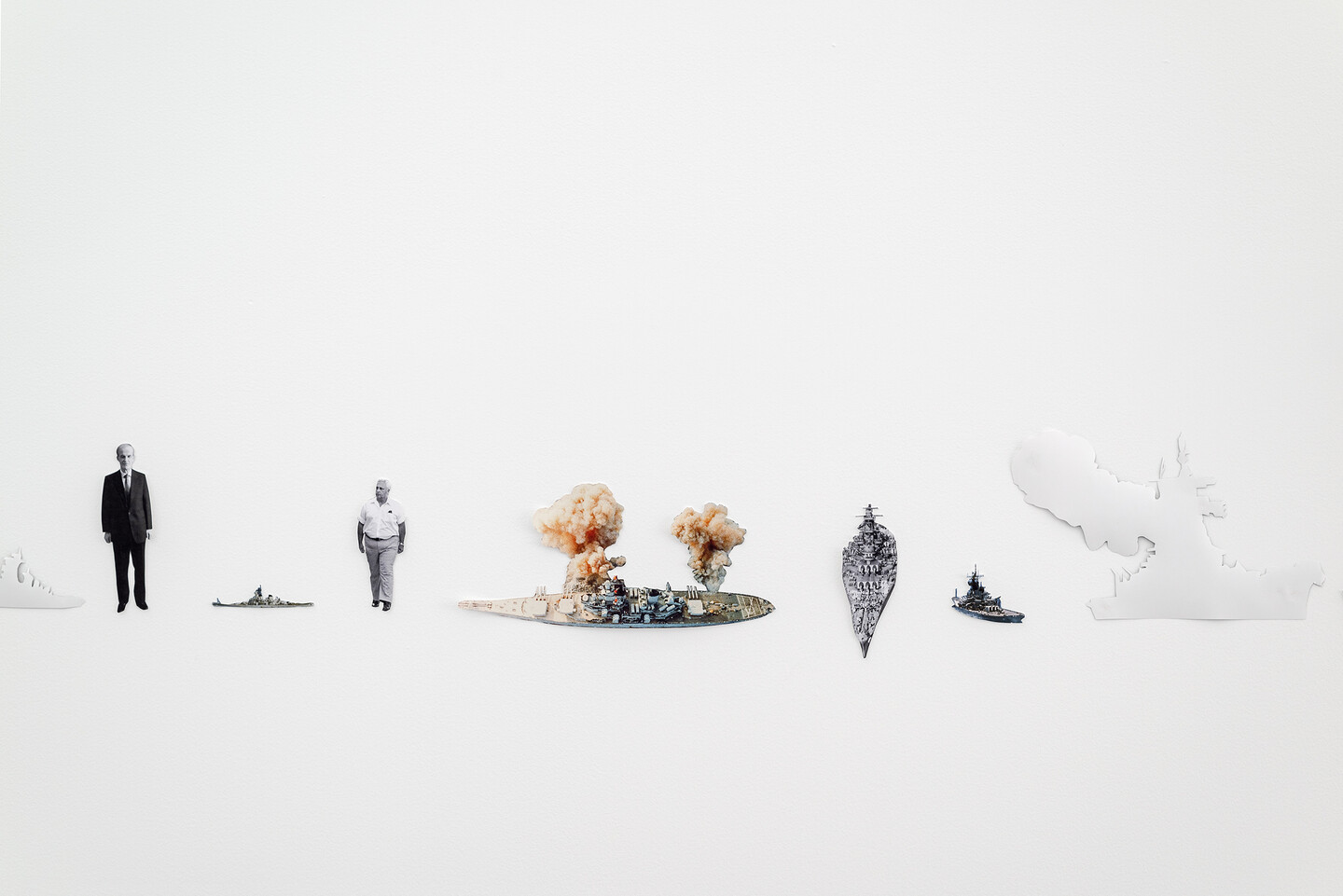
various dimensions
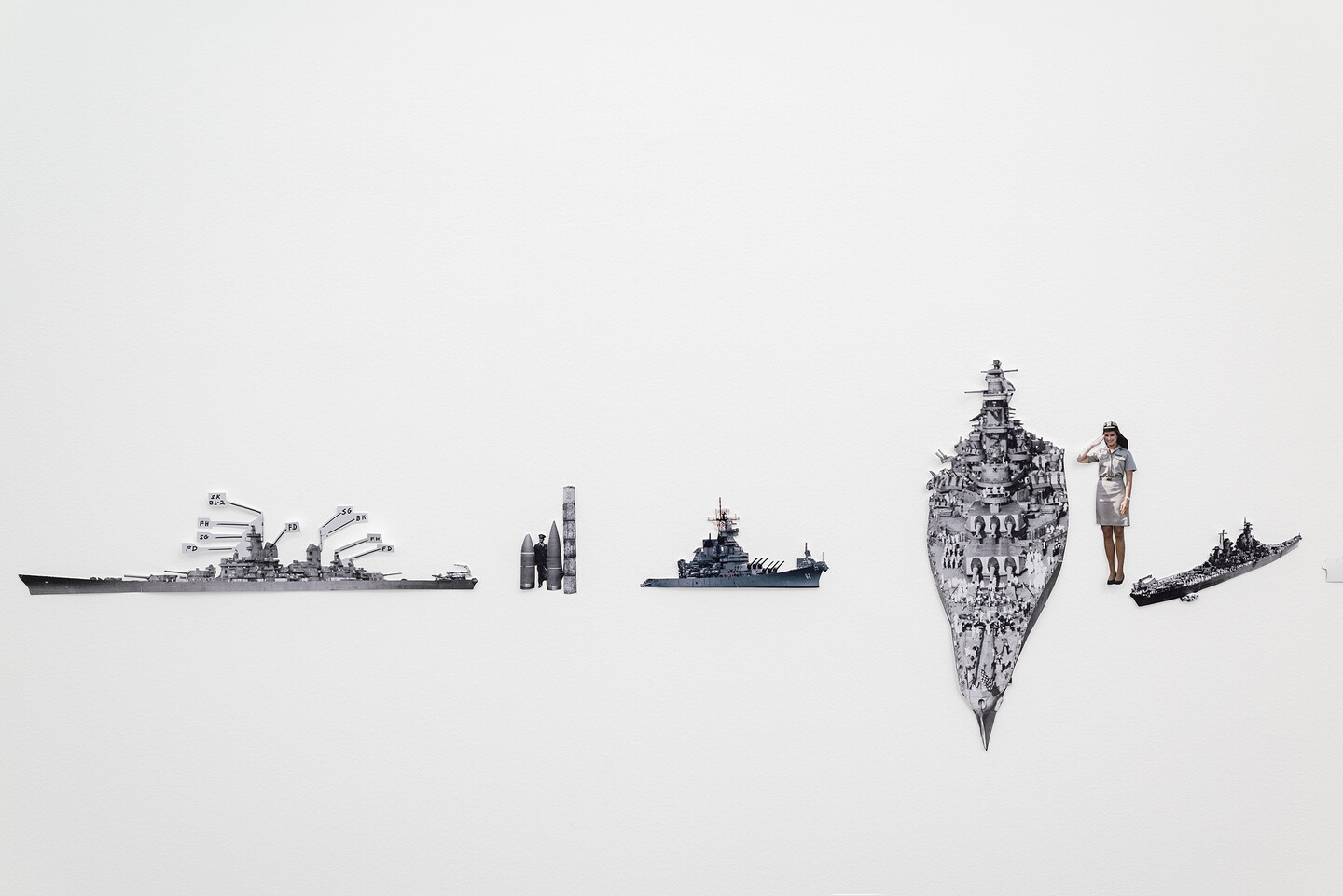
various dimensions
I was born on December 14, 1983, in my mother’s car, on her way to the hospital. I was born on the day the USS New Jersey fired its 16-inch guns on our village. My mother tells me that I was propelled out of her womb by the vibrations of the battleship’s shelling landing and exploding around us.
Sixteen years later, my first car was my mother’s hand-me-down, site-of-my-birth, VW Beetle. It was only then that she offhandedly mentioned to me that the New Jersey’s gigantic explosive projectiles were described by the Americans and the Lebanese as “flying Volkswagens.”
Three years later, and again out of the blue, my mother told me that the “B” in my middle name is not a reference to my father’s name, Bilal, but “B” for Brooke, as in Brooke Shields, her favorite American actress in 1983.
Nine years later I stumbled upon the fact of Brooke Shields’ visit to the USS New Jersey off the coast of Lebanon during the week of my birth. And remarkably (and maybe even expectedly), that Brooke Shields recently became VW’s spokesperson advertising a car named Boom.
But these coincidental anchors have not steadied my ship. I continue to obsess over the USS New Jersey and its 16-inch shells, Brooke Shields, and VW beetles. I can’t seem to get them out of my mind, or body.
- Manal B. Tarabay (b. 1983, Souq El Gharb, Lebanon)

various dimensions
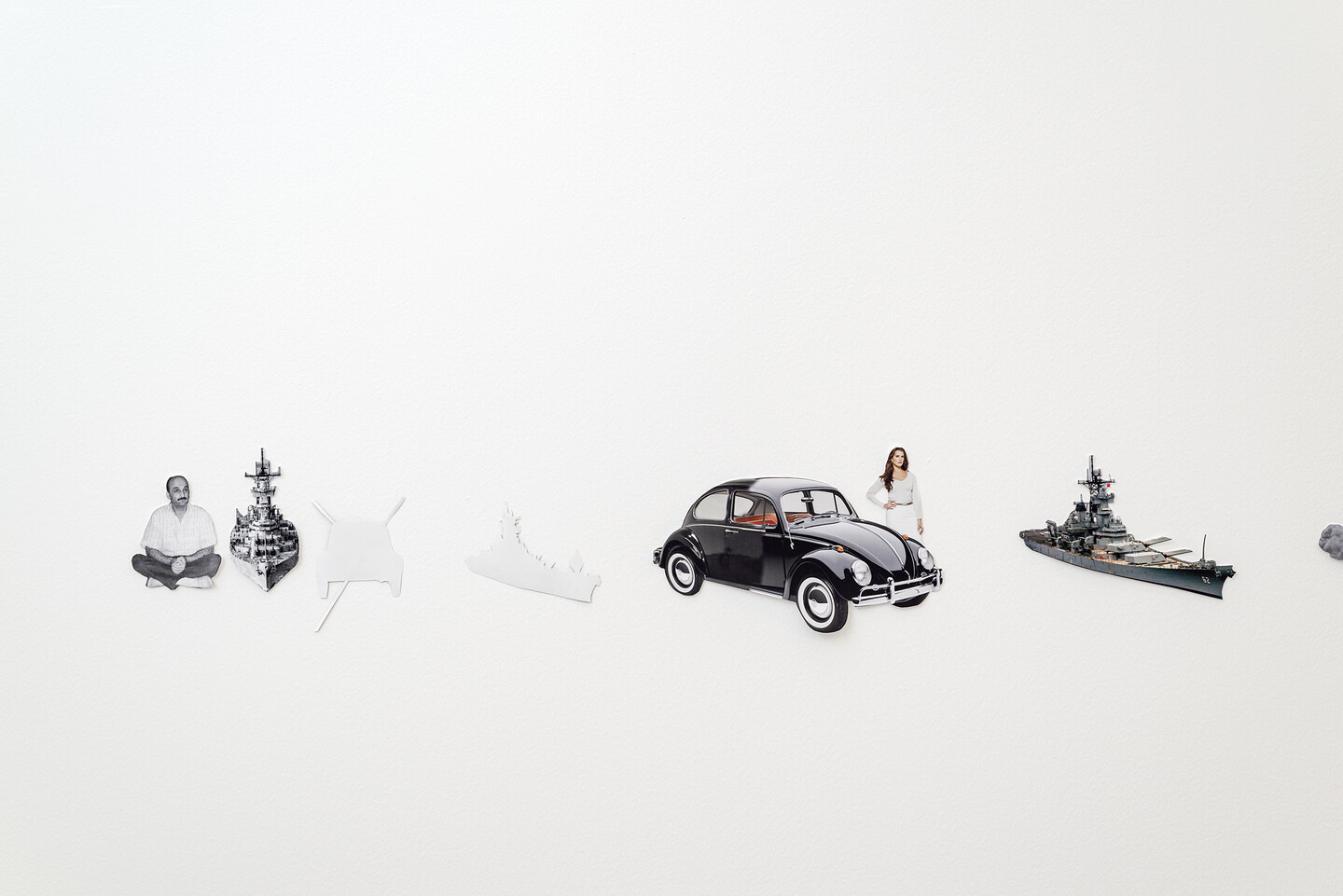
various dimensions
For 30 years, Raad has been making his own documents. Most of the time, his documents allude to events that unfolded in Lebanon during the past five decades. And while these events did indeed unfold, they did so “not in this historical world but in another realm, one with its own strange landscape and odd characters,” says Raad. His artworks are his attempts to visualize and narrate what he sees and hears there.
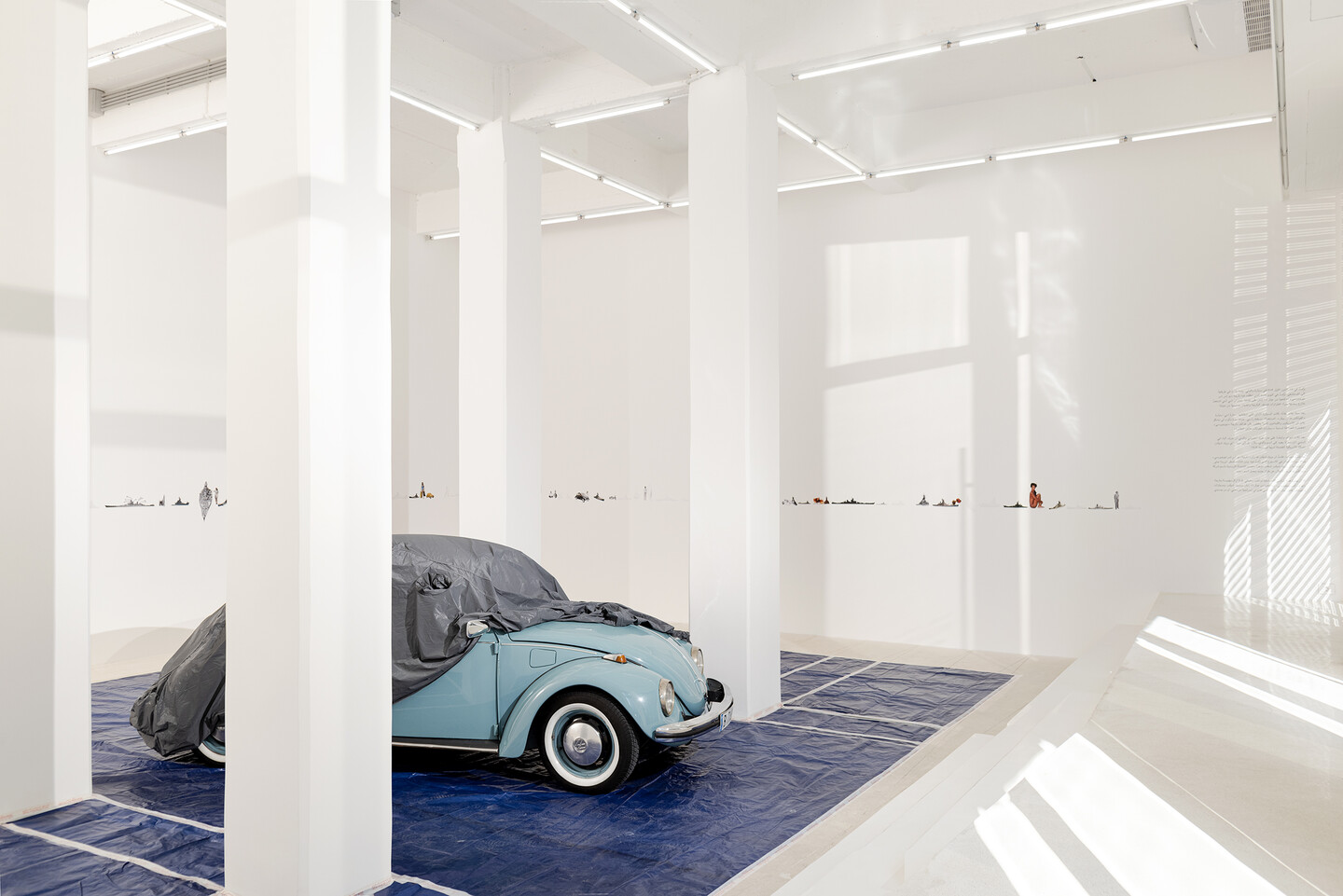
Raad’s works reveal obsessive detail: small, painstakingly cut black and white portraits of military or political figures; cutout newspaper captions in Arabic and English; drawn notations; photocopied maps, layers of stacked, organized paperwork. His stories are displayed in wall-texts that appear alternately as captions and institutional descriptions. But in Raad’s work, the stories are part and parcel—visual and conceptual elements that both anchor and wrest the displayed photographs, sculptures, and videos in and from their historical origins.
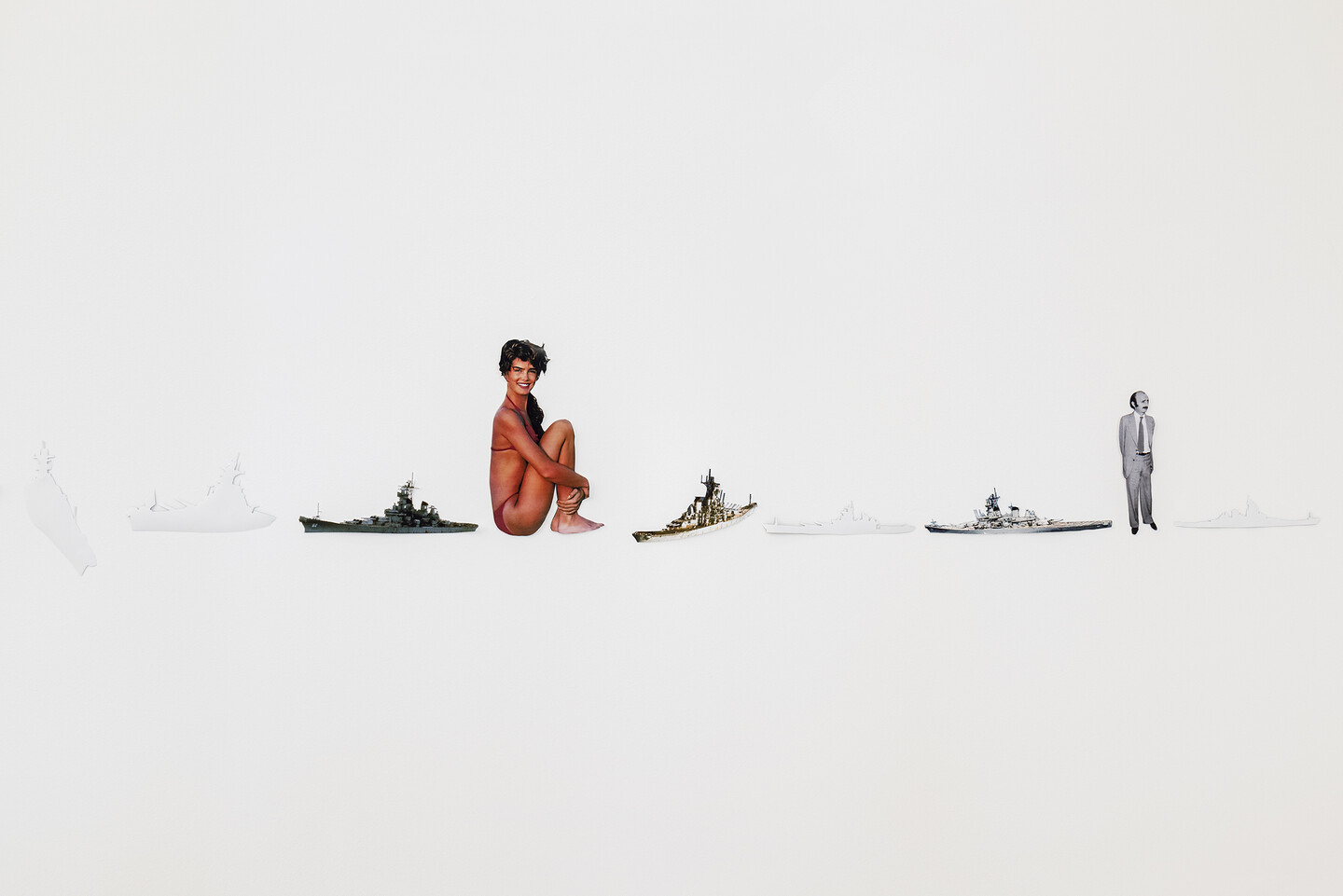
various dimensions